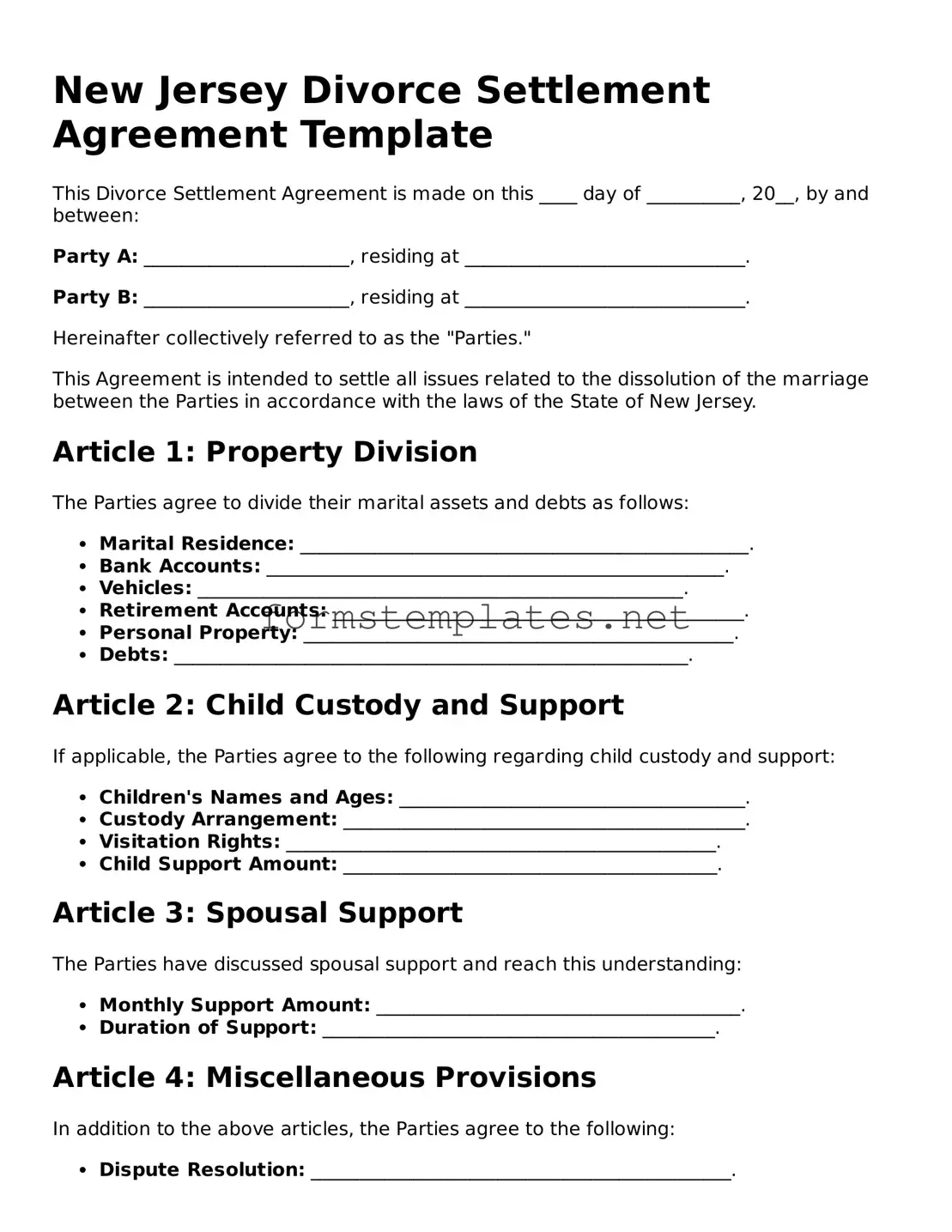New Jersey Divorce Settlement Agreement Template
This Divorce Settlement Agreement is made on this ____ day of __________, 20__, by and between:
Party A: ______________________, residing at ______________________________.
Party B: ______________________, residing at ______________________________.
Hereinafter collectively referred to as the "Parties."
This Agreement is intended to settle all issues related to the dissolution of the marriage between the Parties in accordance with the laws of the State of New Jersey.
Article 1: Property Division
The Parties agree to divide their marital assets and debts as follows:
- Marital Residence: ________________________________________________.
- Bank Accounts: _________________________________________________.
- Vehicles: ____________________________________________________.
- Retirement Accounts: ____________________________________________.
- Personal Property: ______________________________________________.
- Debts: _______________________________________________________.
Article 2: Child Custody and Support
If applicable, the Parties agree to the following regarding child custody and support:
- Children's Names and Ages: _____________________________________.
- Custody Arrangement: ___________________________________________.
- Visitation Rights: ______________________________________________.
- Child Support Amount: ________________________________________.
Article 3: Spousal Support
The Parties have discussed spousal support and reach this understanding:
- Monthly Support Amount: _______________________________________.
- Duration of Support: __________________________________________.
Article 4: Miscellaneous Provisions
In addition to the above articles, the Parties agree to the following:
- Dispute Resolution: _____________________________________________.
- Amendment to Agreement: _______________________________________.
- Governing Law: This Agreement will be governed by the laws of New Jersey.
Signatures
By signing below, the Parties acknowledge that they have read and understood this Divorce Settlement Agreement and agree to its terms.
Party A Signature: ________________________ Date: _______________
Party B Signature: ________________________ Date: _______________
Witness Signature: ______________________ Date: _______________
